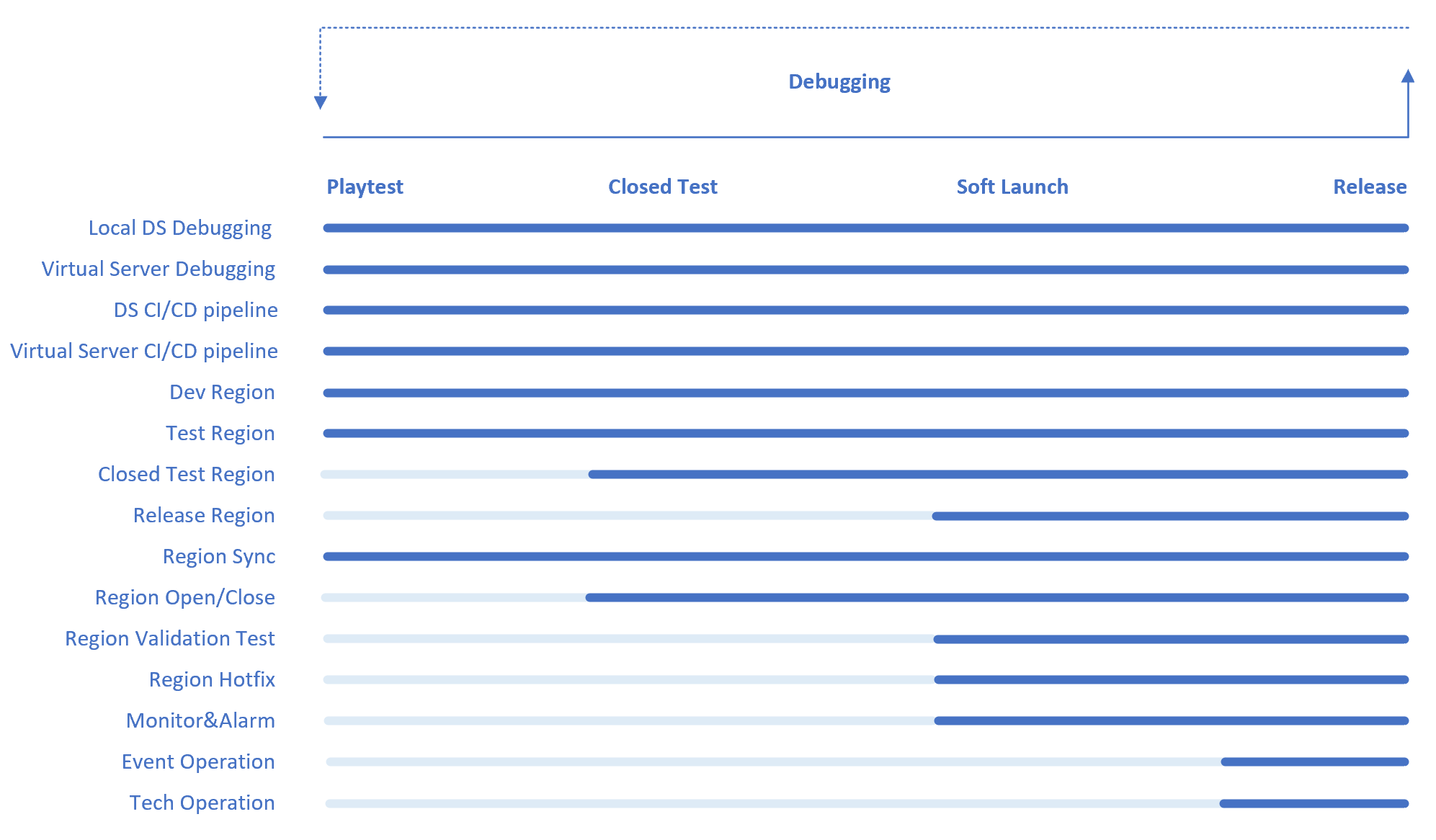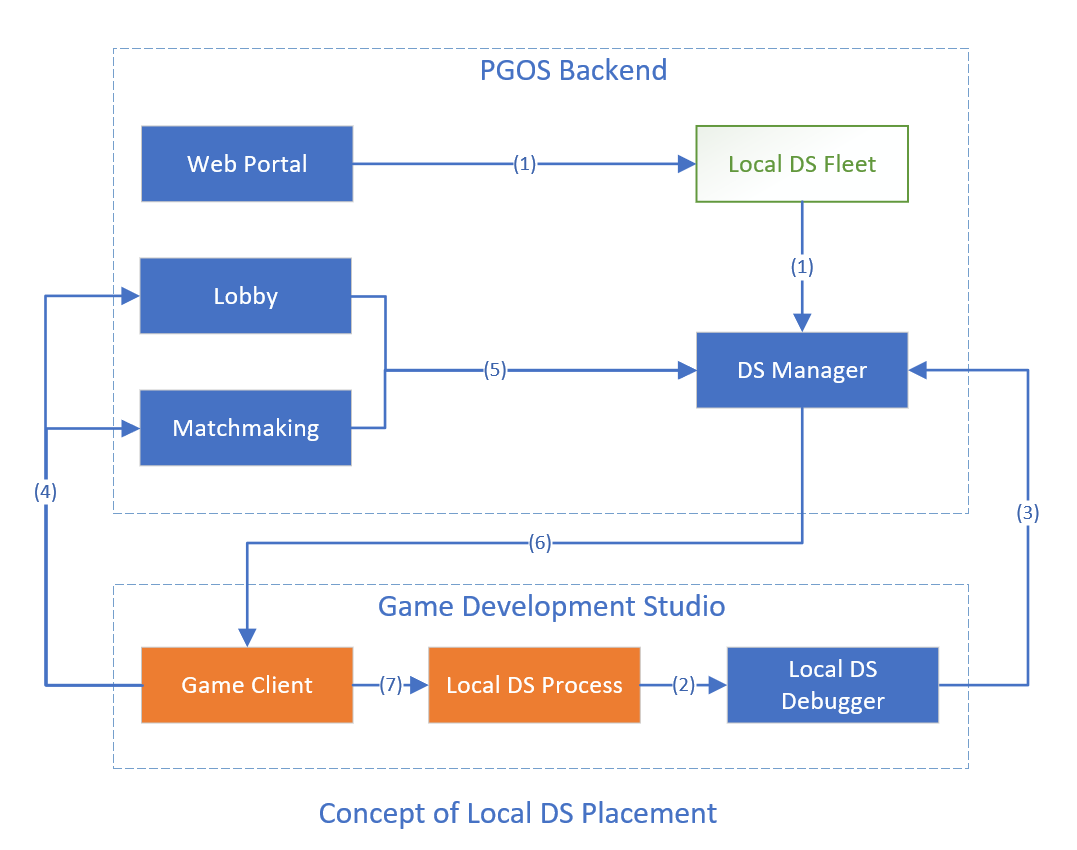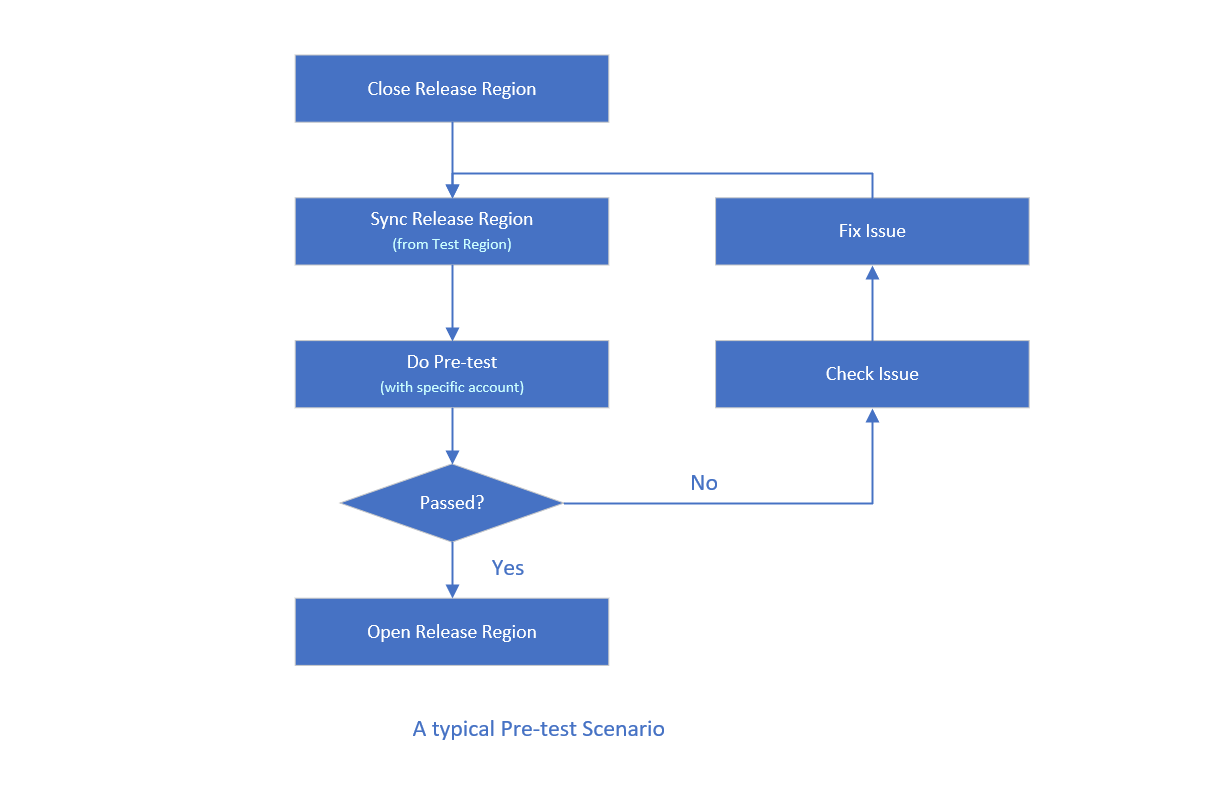DevOps
PGOS covers DevOps things across the whole game development timeline, from the development stage to the LiveOps stage.
Here follows the definition of these kinds of stages:
| Stage | Scenario | Description |
|---|---|---|
| Prototype | Debugging | Early gameplay development stage. The most common need is debugging. |
| Production | Playtest | Multiple playtests are likely to be held in this stage. |
| Polishing | Closed test | The game is mostly completed. Players may join the closed test. |
| Operation | Soft launch | Soft launch of the game. |
| LiveOps | Release | Holding promotes events, analyzes detailed metrics, collects feedback, and so on. |
Developers may have the following DevOps needs when passing these stages one by one. The order is not strictly guaranteed.

1. Debugging
When developers are integrating PGOS with their own games, it would be helpful to provide local debug features.
- Battle services support DS local debugging, which enables developers to run dedicated servers on their own computers instead of building a package and uploading it to PGOS.
- Extension services support Virtual Server debugging, which helps developers to write cloud scripts smoothly.
2. Playtest
After the game enters the production stage, it's reasonable to hold multiple playtests to improve gameplay things and user experience. Developers can rely on the following features to hold playtests efficiently.
- Dev/Test Region
- While the Test region is used for playtest, developers can still continue to deploy the latest modification to the Dev region without conflicts.
- Region Sync Mechanism
- Developers can use Web Portal or CLI tool to easily sync service configurations and build from the Dev region to the Test region.

Dedicated Server CI/CD Pipeline
- With the help of the CLI tool, developers can automate the process of uploading DS builds, creating fleets, associating the placer to match configs, and so on.
Virtual Server CI/CD Pipeline
- With the help of the CLI tool, developers can upload cloud scripts and configure the trigger events quickly.
3. Closed Test
It requires about 1000~5000 players to do a closed test, so it's necessary to set up a CBT region.
Prod Region for Closed Test
- When preparing for the closed test, developers can set up a closed test region and migrate service settings and configs from other regions.
Closed/Open status
- After all preparation jobs are done, turn the status from closed to open to let players join.
4. Soft Launch
Before releasing the game, servers must be ready to receive a massive amount of players.
- Prod Region for Release
- Configure soft launch things in the Prod Region, which will help prevent data leaks and illegal accesses. Only maintainers with correct permissions can operate services in this region.
- Validation Test
- It takes risks to publish the Prod Region to players without testing, so after the preparation jobs are done, turn the status from closed to pre-test, and it's safe to verify all services are working correctly. If all tests are passed and ready to receive players, then switch to open status.

- Region Upgrade & Hotfix
- Region Upgrade - You may need to release the new version on the Prod Region after you complete the development of a new version in the Dev Region. Setting up every new configuration and building manually on the Prod Region is very tedious and error-prone. Region Sync can help you with this automatically. It is highly recommended for this kind of scenario.
- Hotfixes are complicated and may involve modifying settings, updating DS builds, or Virtual Server codes.
- Monitor & Alarm
- Critical metrics and alarms can all be inspected on the PGOS Web Portal.
5. Release
The team may obtain massive market resources and a financial budget to help the game grow healthily. PGOS supports massive players playing online.
- Event Operation
- Marketing activities will be held in the long term, PGOS cooperates with the INTL LiveOps system to provide operation capabilities.
- Tech Operation
- PGOS supports server capacity scalability, problem diagnostics, and other general tech operations.